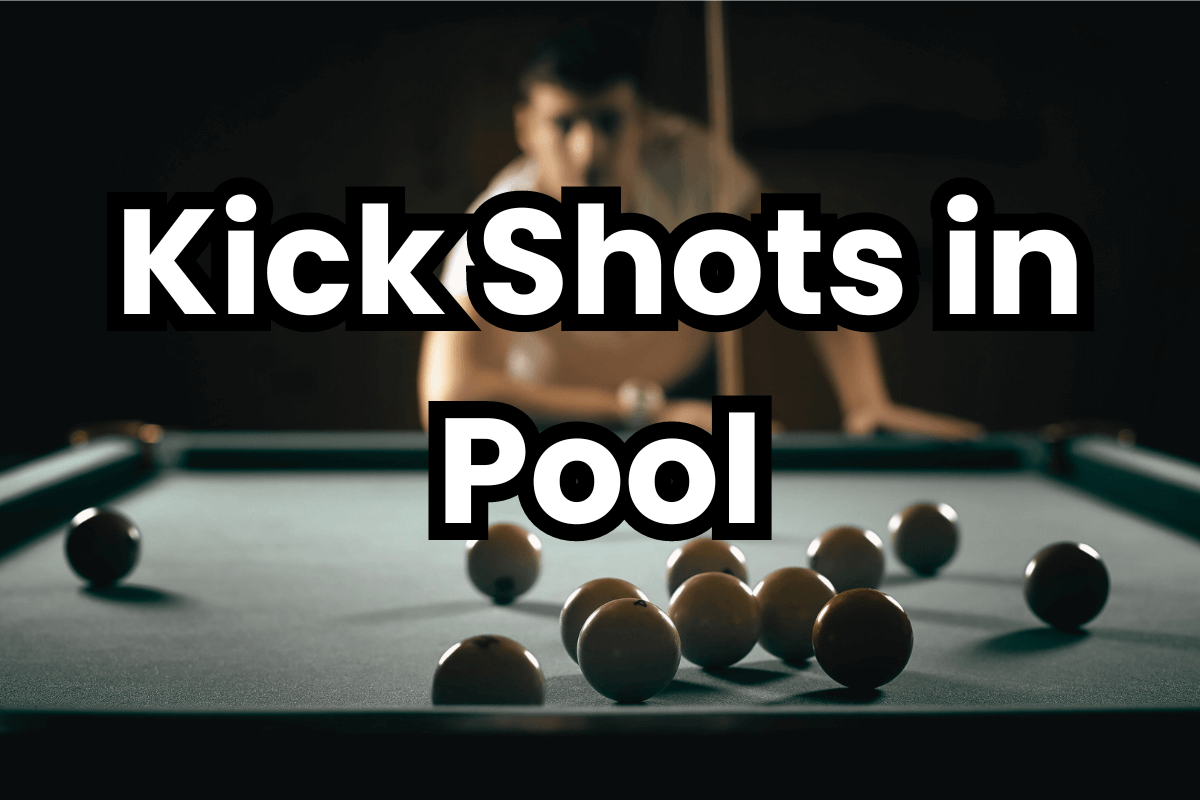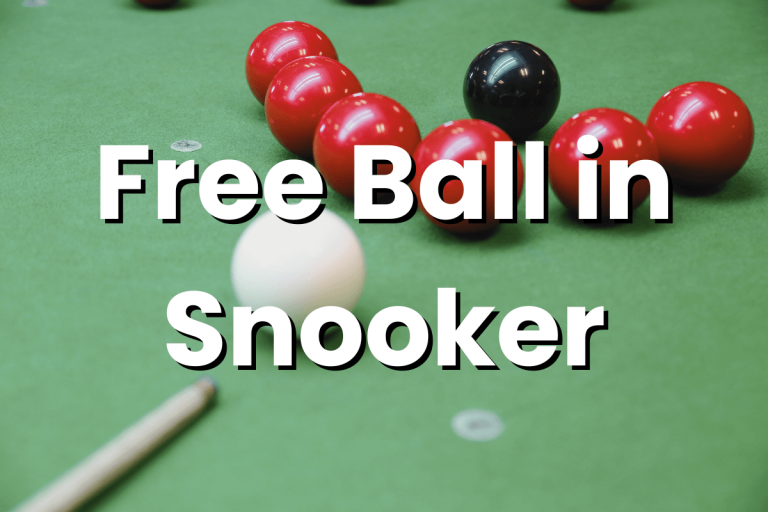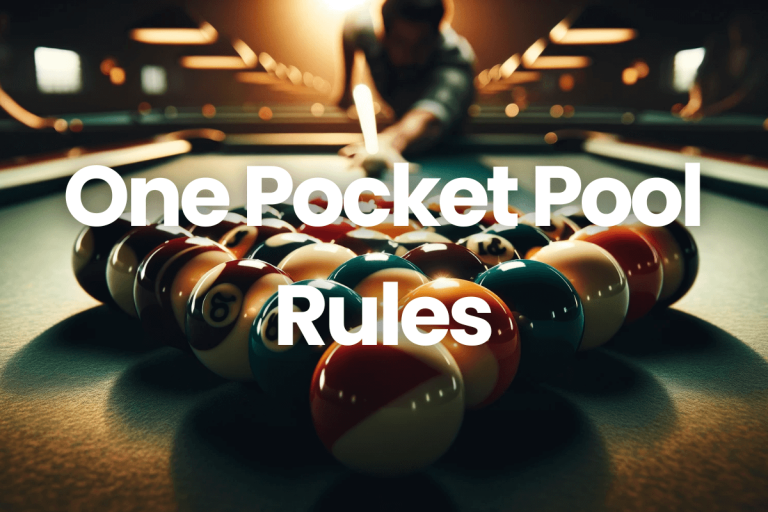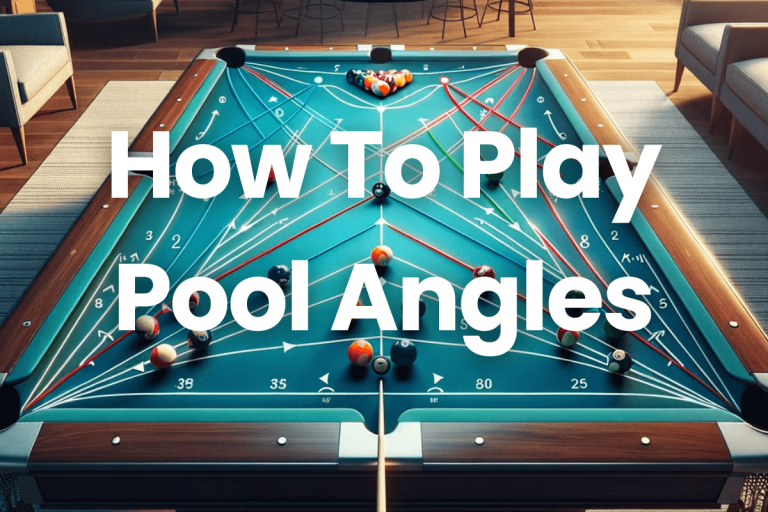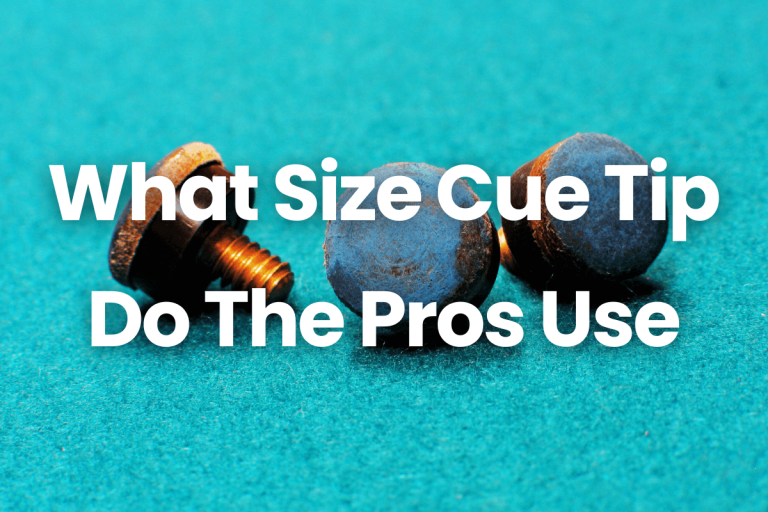The Art of Kick Shots in Pool | Perfect Your Strategies (2024)
Kick shots in pool are the stealthy maneuvers that can turn the tide of a game, offering strategic depth and finesse to players. These shots, where the cue ball ricochets off cushions or rails to hit the target, are pivotal in navigating tricky situations and seizing control of the table. In this exploration of kick shots in pool, we unravel the secrets behind these subtle yet powerful moves. From mastering the angles to deploying advanced strategies, this guide promises to equip you with the essential techniques needed to dominate the pool table with confidence and precision.
Understanding Kick Shots in Pool
Kick shots, also known as bank shots or cushion shots, are techniques in the pool where the cue ball is intentionally aimed to contact one or more rails before hitting the target ball. This indirect approach is used to overcome obstacles or achieve position for subsequent shots.
Role in Pool Strategy
Kick shots play a crucial role in pool strategy by providing players with alternative options when direct shots are obstructed. They allow players to navigate around obstacles such as other balls or cushion angles, enabling them to maintain control of the game and execute complex shots.
When and Why Kick Shots Are Used
Kick shots are employed in various situations during gameplay, including:
Navigating Obstacles
When a direct shot on the object ball is blocked by other balls or positioned in a challenging location, a kick shot can circumvent the obstacle and pocket the target ball.
Safety Play
In defensive play, kick shots are utilized to create separation between balls or to leave opponents with difficult shots. They can also be used to break up clusters of balls or move balls into advantageous positions.
Positional Play
Kick shots are strategically used to position the cue ball for subsequent shots, allowing players to maintain control of the table and effectively set up their next shot.
Importance of Mastering Kick Shots
Mastery of kick shots is essential for both defensive and offensive play in pool. Key reasons include:
Versatility: Proficiency in kick shots adds versatility to a player’s arsenal, allowing them to adapt to various table layouts and overcome challenging situations.
Control: Kick shots provide players with greater control over the cue ball’s path, enabling precise positioning and strategic shot selection.
Strategic Advantage: Players who master kick shots gain a strategic advantage over opponents by effectively navigating obstacles, seizing opportunities, and dictating the flow of the game.
Anatomy of a Kick Shot
Components of a Kick Shot:
- Cue Ball: The white ball that the player strikes with the cue stick to initiate the shot.
- Object Ball: The target ball that the player aims to hit with the cue ball.
- Rail(s): The cushion or cushions along the perimeter of the pool table.
Explanation of Angle of Incidence and Angle of Reflection:
- Angle of Incidence: This refers to the angle at which the cue ball strikes the rail. It is measured relative to an imaginary line perpendicular to the rail’s surface at the point of contact.
- Angle of Reflection: After striking the rail, the cue ball rebounds off at an angle equal to the angle of incidence. The angle of reflection is measured relative to the same imaginary line perpendicular to the rail’s surface.
Visual Aids:
Visual aids are invaluable tool for understanding the mechanics of kick shots. They help illustrate concepts such as:
- The angle at which the cue ball must contact the rail to achieve the desired path towards the object ball.
- The relationship between the angle of incidence and the resulting angle of reflection.
- Various scenarios and shot angles demonstrate the versatility of kick shots in navigating around obstacles.
Essential Techniques for Kick Shots in Pool
Kick shots are a fundamental aspect of pool and billiards, requiring precision, control, and a good understanding of the physics behind the cue ball’s movement. Here are some essential techniques and tips to help you master kick shots:
1. Approach to Aiming and Visualizing the Kick Shot Angle
- Use the Diamond System: This is a common method to calculate the path for kick shots using the diamonds (or dots) around the pool table’s perimeter. By numbering the diamonds and using simple math, you can predict where the cue ball will contact the rail to reach your target.
- Visualize the Line: Imagine a straight line extending from your target ball back to the rail where you plan to kick. This line helps you determine the angle at which the cue ball should hit the rail.
- Mirror Image Technique: Consider the angle the cue ball takes to the rail as equal to the angle it will leave the rail. Visualize a mirror image of the path you want the cue ball to take after it hits the rail.
2. Adjustments for Cue Ball Spin and Speed
- Spin Effects: Applying side spin (English) to the cue ball can alter its path after hitting the rail. Right spin (right English) will make the cue ball veer right upon rail contact, and left spin does the opposite.
- Use side spin to navigate around obstacles or to get better positioning for your next shot.
- Speed Control: The speed of the cue ball affects its rebound angle off the rail. A faster shot can straighten the rebound angle, while a slower shot tends to follow the natural angle more closely.
- Practice with different speeds to see how the cue ball reacts. This will help you get a feel for how much speed to use in different situations.
3. Tips for Judging Distance and Accounting for Deflection
- Distance and Angle Relationship: Understand that the rebound angle becomes narrower as the distance between the cue ball’s contact point on the rail and the target increases.
- Account for Deflection: Deflection refers to the cue ball’s deviation from a straight line when side spin is applied. Be aware that the amount of deflection increases with the speed of the shot and the amount of spin used.
- Adjust your aiming point on the rail based on the anticipated deflection.
Practice Drills
- Rail Contact Drill: Practice hitting the cue ball to a rail and getting it to stop as close as possible to a specific point on the rail. This drill helps improve your accuracy with rail shots.
- Kick and Call: Set up shots where you have to kick the cue ball off a rail to hit a specific ball. Call the ball and pocket (if applicable) before each shot to practice precision and planning.
Additional Tips
- Consistency in Stroke: Ensure your stroke is consistent in terms of speed and follow-through. Inconsistencies can lead to unpredictable cue ball paths.
- Mental Preparation: Visualize the shot before executing. This mental rehearsal helps improve your accuracy and confidence in making kick shots.
Advanced Kick Shot Strategies
Advanced kick shot strategies elevate your pool game by allowing you to navigate complex table layouts and execute high-level shots that can turn the tide of a match. Here’s a deeper dive into understanding multiple rail kick shots and incorporating kick shots into combination shots.
Multiple Rail Kick Shots
Multiple rail kick shots involve the cue ball hitting more than one rail before reaching the target ball. These shots are invaluable in situations where a direct path is blocked, or a more favorable position for the next shot is desired.
Strategy and Application
Planning the Path: Analyze the table and determine the path that offers the best chance to hit the target ball. Consider not just the immediate shot but also the positioning for subsequent shots.
Using the Diamond System: For multiple rail kicks, the diamond system becomes more complex but is still invaluable. Extend the basic principles by planning your route using multiple diamonds as reference points.
Control and Precision: Controlling the cue ball’s speed is crucial in multiple rail kicks. The more rails you involve, the more the initial speed of the cue ball will dissipate, affecting the angle and speed after each contact.
Tips
- Practice with a specific setup repeatedly to understand how slight changes in angle, speed, and spin affect the outcome.
- Learn to visualize geometric patterns on the table. This helps in predicting the cue ball’s path across multiple rails.
Incorporating Kick Shots into Combination Shots
Combination shots involve hitting the cue ball to make one or more balls contact each other before pocketing the intended ball. When kick shots are incorporated into combination shots, they require precise control and planning.
Strategy and Application
Identify the Shot: Look for opportunities where a kick shot can be used to initiate a combination shot. This is particularly useful when direct shots are not available.
Plan for Spin and Speed: Applying the right amount of spin and controlling the speed of the cue ball can set up both the kick and the combination effectively. The spin will affect how the cue ball interacts with the first object ball, influencing the trajectory of subsequent balls.
Precision in Execution: The complexity of executing a kick into a combination shot demands a high degree of precision. Practice is key to understanding how the cue ball behaves when combining these elements.
Tips
- Use practice drills that focus on controlling spin and speed together. For example, practice hitting the cue ball to a rail with specific spin to pocket a ball or set up a combination.
- Work on your visualization skills. Being able to predict the entire sequence of movements accurately is crucial for successful execution.
Conclusion
Kick shots in pool are pivotal for strategic gameplay, enabling players to navigate complex table situations and secure advantageous positions. By integrating kick shot techniques into your practice routine, you embrace a path toward enhancing your tactical prowess. I encourage you to delve into further resources, embracing continuous learning and skill refinement. This dedication to mastering kick shots in pool will not only elevate your game but also enrich your enjoyment and success in the sport.
FAQ
What is a kick shot in pool?
A kick shot in pool involves hitting the cue ball into one or more rails before it strikes the intended target ball. This technique is often used to navigate around obstacles on the table.
How do you aim a kick shot effectively?
To aim a kick shot effectively, use the diamond system on the pool table as a guide. Visualize the trajectory, considering the angle of incidence equals the angle of reflection, and adjust for spin and speed to refine your aim.
Can kick shots be used defensively as well as offensively?
Yes, kick shots can be employed both defensively and offensively. Defensively, they can be used to escape difficult situations or snooker the opponent. Offensively, they offer a way to make a shot when a direct line to the target ball is blocked.

